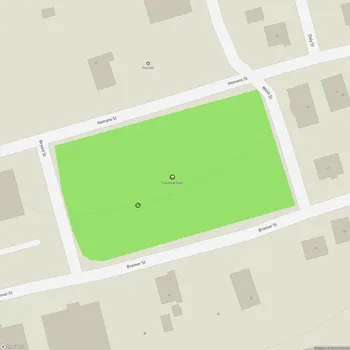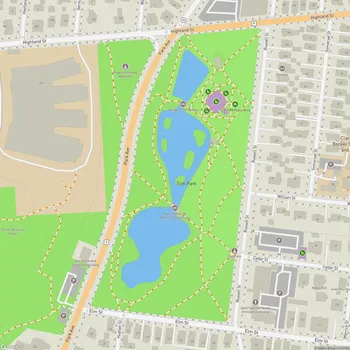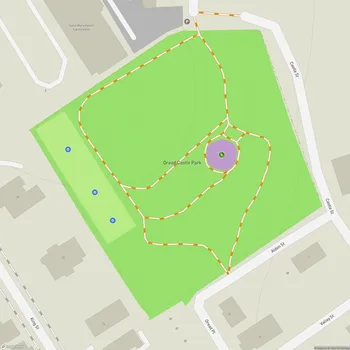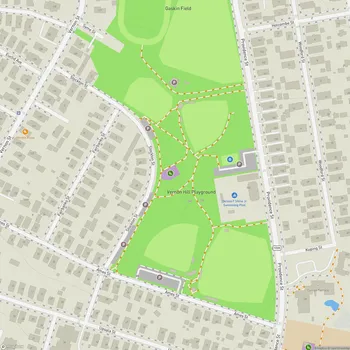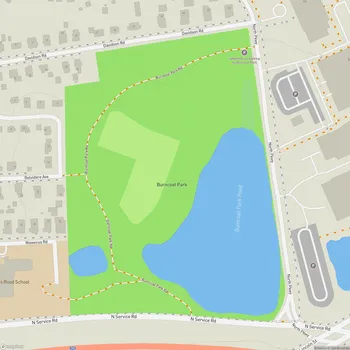Cristoforo Colombo Park
Interactive Park Map
About Cristoforo Colombo Park
History and Heritage
Once upon a time in Worcester, this green space was known as Chandler Hill Park until the Parks Commissioners officially handed it over to the city on December 6, 1909. Today, it bears the name Cristoforo Colombo Park, honoring the Italian explorer we all know as Christopher Columbus - a nod to Worcester's Italian-American heritage.
Over the years, the park has become a cherished gathering spot for Italian-American community celebrations. If you're chatting with locals, you might hear them call it East Park - the nickname that's stuck around for generations.
Distinctive Features
You'll know you've arrived when you spot the impressive entrance with two stone griffins (imagine lions with wings) standing guard. These majestic creatures once supported the arch at Worcester's old Union Railroad Station before finding their new home here in 1916. It's these little historical touches that give the park its unique character.
Spanning 23 acres within the Shrewsbury Street commercial area, this green space is used by both the neighborhood and the wider city. The open grassy fields invite you to sprawl out with a good book or toss a frisbee, with plenty of benches scattered about when you need a moment to sit and take it all in.
Recreation and Amenities
Whether you're a serious athlete or just looking to stretch your legs, Cristoforo Colombo Park offers several options. The developed recreation areas blend seamlessly with undeveloped hillsides, which create natural trails connecting to nearby Bell Pond Park and Green Hill Park - you could even make your way all the way to Lake Quinsigamond if you're feeling adventurous.
Sports enthusiasts will appreciate the lighted fields for evening football games, multiple tennis courts for those who enjoy a good rally, and basketball courts for pickup games. There's also a baseball diamond where you can practice your swing or organize an impromptu game with friends.
Family Activities
Kids have plenty of space to burn energy here. The park features two thoughtfully designed playgrounds - a smaller one great for toddlers just finding their feet, and a larger playground where older children can challenge themselves on climbing structures, slides, swings, and stepping stones.
When summer temperatures rise, the park's splash pad becomes the place to be, typically opening at noon. Pack those towels and water shoes! This refreshing spot is popular with local families on hot summer days.
Events and Gathering Spaces
The park's charming amphitheater comes alive during warmer months, with the highlight being the Massachusetts Symphony Orchestra's performance during Worcester's Independence Day Celebration. Stick around after the concert and you'll be treated to a spectacular fireworks display lighting up the night sky.
Planning a get-together? You can find numerous picnic tables between the splash pad and playground areas, plus plenty of grassy spots excellent for spreading out blankets. It's an ideal setting for family reunions, birthday celebrations, or simply catching up with friends over a packed lunch.
Accessibility and Convenience
You can park hassle-free in the dedicated off-street lot via Oleum Court at the back of the park - a safer option when you've got kids in tow. The park's location near Shrewsbury Street's restaurants and cafes means you can easily extend your day out with a meal or coffee run when park activities work up an appetite.
Dog owners, your four-legged friends are welcome here, just remember to keep them leashed and clean up after them. And don't worry about getting caught short during a long day of play - restrooms are available when the splash pad is operating, making it comfortable to spend hours enjoying everything this historical park has to offer.
All Features & Facilities
Active Recreation
Nature & Wildlife
Water Features & Activities
Visitor Services
Food & Gathering
Photo Gallery
ParkMagnet Score
Good Park
Park Size
Opening Hours
Weather
Top Restaurants Near Cristoforo Colombo Park
Meze Estiatorio
108 feet166 Shrewsbury St, Worcester, MA 01604
Authentic Greek and Mediterranean restaurant serving fresh dishes like souvlaki and traditional mezze platters.
La Scala Ristorante
128 feet183 Shrewsbury St, Worcester, MA 01604
Family-friendly Italian restaurant serving traditional fare in a lively atmosphere with outdoor patio seating.
Piccolo's
246 feet157 Shrewsbury St, Worcester, MA 01604
Upscale Italian restaurant serving elevated specialties with homemade pasta and fresh ingredients in cozy surroundings.
Top Hotels Near Cristoforo Colombo Park
Homewood Suites by Hilton Worcester
0.4 miles1 Washington Sq, Worcester, MA 01604
Extended stay hotel offering spacious suites with indoor pool, fitness center, and complimentary breakfast.
